Managing Patient Emergencies – Robin Gilbert
Original price was: $199.99.$56.00Current price is: $56.00.
Managing Patient Emergencies – Robin Gilbert Download. Mrs. Kelp is admitted with pneumonia and right-sided heart failure. Twenty minutes after admission, …
Salepage link: At HERE. Archive:
- ?NEVER Miss the Subtle Changes in Your Patient that Could Lead to BIG Trouble
- Rapid Assessment Skills that Improve Outcomes for Your MOST Critical Patients
- The BEST Interventions for Cardiac, Neurological, Endocrine & Respiratory Emergencies
- Tools to Sharpen Your Crisis Management Skills
Mrs. Kelp is admitted with pneumonia and right-sided heart failure. Twenty minutes after admission, she develops worsening dyspnea and hypotension.
- Are you prepared to manage her unstable condition?
- Do you know what respiratory measures are necessary?
- Do you know the best way to manage her hypotension?
The patients in our hospitals are sicker than ever before. It is not uncommon to find patients on regular medical floors with central lines, chest tubes, pacemakers and AICDs. Some nursing homes are accepting patients on ventilators, and patients are now being sent home on vasoactive drips such as dobutamine. Even though acuity levels are higher you are still caring for many patients and don’t have the luxury of frequent, comprehensive assessments. Therefore, it is important to be able to rapidly assess and implement appropriate interventions. Attend this seminar to sharpen your skills and leave prepared to identify and manage your next patient emergency!
- Describe two types of rapid assessment techniques and how to employ them for the best results during a patient emergency.
- Evaluate techniques for getting critical information during a rapid patient assessment.
- Investigate EARLY assessment findings in clinical syndromes that may progress rapidly and cause life-threatening conditions.
- Prioritize nursing actions for specific neurological, cardiac, respiratory and endocrine emergencies.
- Review care of the diabetic patient in diabetic ketoacidosis.
- Identify patient populations who are at high-risk for bedside emergencies.
- Discuss how to integrate assessment data and critical lab findings into the plan of care for a patient experiencing a life-threatening emergency.
Identifying the RED Flags
- Critical Thinking During a Crisis
- Vital Signs & ABCDs
- Methods for Establishing and Maintaining Airway
- Breathing: More Than a Rate Issue
- Circulation & Perfusion
- Rapid Assessment Techniques
- Critical Questions to Ask Your Patient
- Identifying High-Risk Populations
- Sick or Not Sick…Who would you see first?
Cardiovascular
Prevention, Presentation, Action for: “I’m having chest pain”
- Recognizing Arrhythmias – Stable, Unstable and Lethal
- Rhythm Recognition & Treatment for: VT, VF, SVT, and Heart Blocks
- Acute Myocardial Infarction: STEMI/NSTEMI
- Key Assessments & Interventions
- tPA Guidelines
- Laboratory Parameters
- Recognizing Subtle Changes
- Hemodynamic Monitoring:
- MAP, CO, SV, CI
- Preload, Afterload, Contractility
- Skills Practice: EKG Interpretation
Respiratory
Prevention, Presentation, Action for: “I can’t breathe”
- Capnography Basics
- Assessment & Critical Interventions for:
- Pulmonary Embolism
- Respiratory Failure
- COPD
- ARDS
- The Patient Who Needs Assistance
- O2, CPAP, BiPAP
- Indications for Intubation
- Positive Pressure Ventilation
- Chest Tube Management
- Easy ABG Analysis…Really!
Endocrine
Prevention, Presentation, Action for: “I don’t feel right”
- The Differences of DKA and HHNK
- Early Recognition of Hypoglycemia
- Critical Lab Findings
- Differentiating the Diagnosis – Case Studies
- Which Intervention Should you do FIRST
- What is the Likely Problem
- Anticipating the Solutions
Neurological
Prevention, Presentation and Action for: “My head hurts!”
- Elevated Intracranial Pressure
- Clues When you Don’t have a Monitor
- Ischemic vs. Hemorrhagic Stroke
- Inclusion/Exclusion for tPA
- Critical Labs
- Malignant Headache
- Delirium
- Autonomic Dysreflexia
- Simulation Lab Review
- Interpreting the Patient’s Presentation
Fluid Imbalance/Circulatory Emergencies
- Sepsis
- Shock
- GI Bleed
- Abdominal Aortic Aneurysm
- Compartment Syndrome
Managing the Decompensating Patient
- No Pulse, No Blood Pressure, No Respirations…Now What?
- Common Medications
- Monitor/Defibrillator Review
- Roles & Responsibilities During a Code
What’s New & Trending
- Ethical Considerations
- Documentation Pitfalls
- Staffing Considerations & High Acuity Patients
Here's an overview of the prominent keywords and a list of famous authors:
Business and Sales: Explore business strategies, sales skills, entrepreneurship, and brand-building from authors like Joe Wicks, Jillian Michaels, and Tony Horton.
Sports and Fitness: Enhance athleticism, improve health and fitness with guidance from experts like Shaun T, Kayla Itsines, and Yoga with Adriene.
Personal Development: Develop communication skills, time management, creative thinking, and enhance self-awareness from authors like Gretchen Rubin, Simon Sinek, and Marie Kondo.
Technology and Coding: Learn about artificial intelligence, data analytics, programming, and blockchain technology from thought leaders like Neil deGrasse Tyson, Amy Cuddy, and Malcolm Gladwell.
Lifestyle and Wellness: Discover courses on holistic health, yoga, and healthy living from authors like Elizabeth Gilbert, Bill Nye, and Tracy Anderson.
Art and Creativity: Explore the world of art, creativity, and painting with guidance from renowned artists like Bob Ross and others.
All the courses on WSOlib are led by top authors and experts in their respective fields. Rest assured that the knowledge and skills you acquire are reliable and highly applicable.
Specification: Managing Patient Emergencies – Robin Gilbert
|
User Reviews
Only logged in customers who have purchased this product may leave a review.

Original price was: $199.99.$56.00Current price is: $56.00.

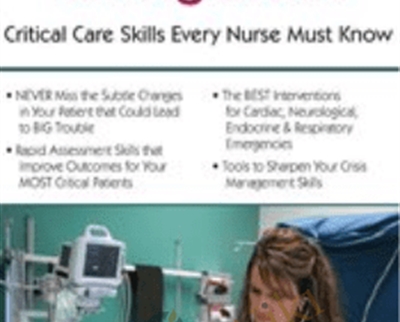





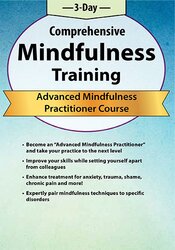
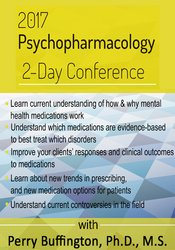
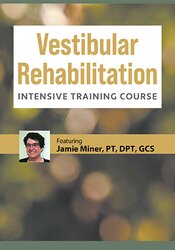
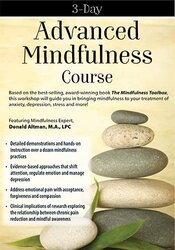

There are no reviews yet.